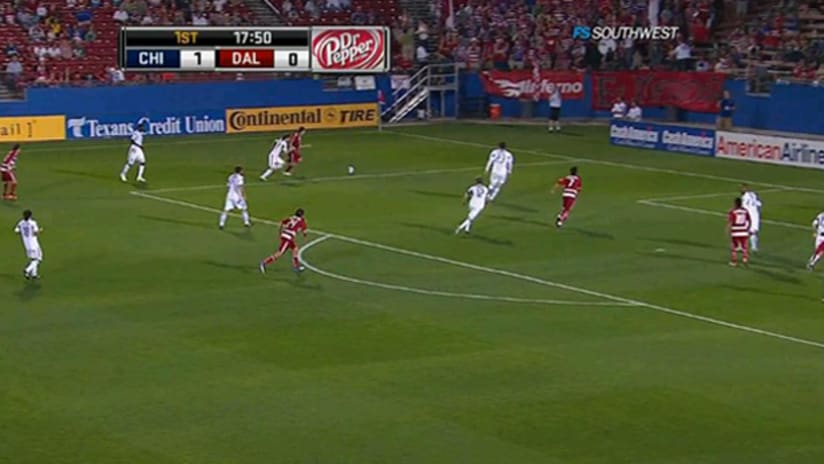Chicago Fire coach Carlos de los Cobos tried something different last weekend, and for that he deserves credit. Also to his credit is that he scrapped that something different for something conventional when it was clear things weren’t working.
De los Cobos’ dip into iconoclasm came in the form of trotting out his Fire side in a 3-4-3, a formation rarely used in MLS. Honestly, I can’t think of a single MLS side to have used the 3-4-3 as their primary formation throughout an entire year. The closest would be 2001’s Miami Fusion, but even with Preki in midfield, that team still played a 3-5-2.
It’s not for lack of daring that MLS managers eschew the 3-4-3 (and, these days, the 3-5-2), but for a chunk of vulnerabilities exacerbated by playing three central defenders in the back and static wingbacks.
Both formations came about in the 1980s as a way of dealing with physically dominant center-forwards like those employed by the Germans and English. The main idea is to play with three central defenders instead of two, making up in numbers what was lacking in sheer physicality.
Now that most teams only play with one center forward, and some not even that, the 3-5-2 has largely gone the way of the mullet — a relic of another time, scoffed at and largely dismissed. Why play with three central defenders, after all, if two of them aren’t going to have anyone to mark? Why play with one wingback on each side when marauding fullbacks in the Dani Alves mold can so consistently overwhelm a wingback and get by on them on the flanks?
[inlinenode:331938]All those vulnerabilities were on display in the Fire’s 1-1 draw at FC Dallas, and all within the first 18 minutes.
There was dislocation between the forward lines and the midfield, a lack of width both offensively and defensively, “bunching” (at right) – the phenomenon when as many as eight players end up in roughly the same part of the pitch, leaving space for the opposite fullback – and, particularly on the goal Chicago conceded, defenders getting pulled out of position and a resulting inability to close down threats both on and off the ball.
On that goal, which came immediately after the Fire’s opener, Dallas left back Zach Loyd and left midfielder Eric Avila combined down Chicago’s right side, sucking both right-central defender Jalil Anibaba and right wingback Bratislav Ristic deep into the corner.
Avila controlled and dumped the ball back to Loyd, who was able to split the two and carry the ball into the area. Central defender Josip Mikulic came over to challenge Loyd, in the process leaving Milton Rodriguez open in front of goal. Just like that, the game was tied. The Fire switched to a more traditional 4-4-2 soon thereafter.
WATCH: Dallas equalize vs. Chicago Fire
Breakdowns from good (or bad, depending upon one’s perspective) individual play can and do happen no matter the formation and tactics used.
But this breakdown was compounded first by asking Anibaba, a rookie, to defend well out of his comfort zone on the wing, and then by a lack of definition in overall defensive responsibilities. That’s nothing shocking for a team that has barely a month of tactical work on the books and a host of new faces – including all three central defenders – to integrate.
What’s funny is just how far the game has come in the past half-decade. As recently as 2007, the New England Revolution used the 3-5-2 to great effect, clogging up the midfield and destroying teams on set-pieces. Peter Nowak’s 2004 MLS Cup-winning D.C. United team, and way back in 1998, Bob Bradley’s inaugural Chicago Fire side (of which Nowak was one of the key cogs) that unseated United as MLS Cup champs were others that played with three in the back and did so with championship results.
De los Cobos hinted this week that he wasn’t done with three in the back this year – he mentioned the 3-5-2 rather than the 3-4-3, and read into that what you will – and he may not be foolish for failing to scrap it all together. Loyd is one of the best attacking fullbacks in the league, the exception rather than the rule, and that alone may be impetus enough to give the 3-5-2 another try.
Matthew Doyle can be reached for comment at matdoyle76@gmail.com and followed at twitter.com/mlsanalyst.


